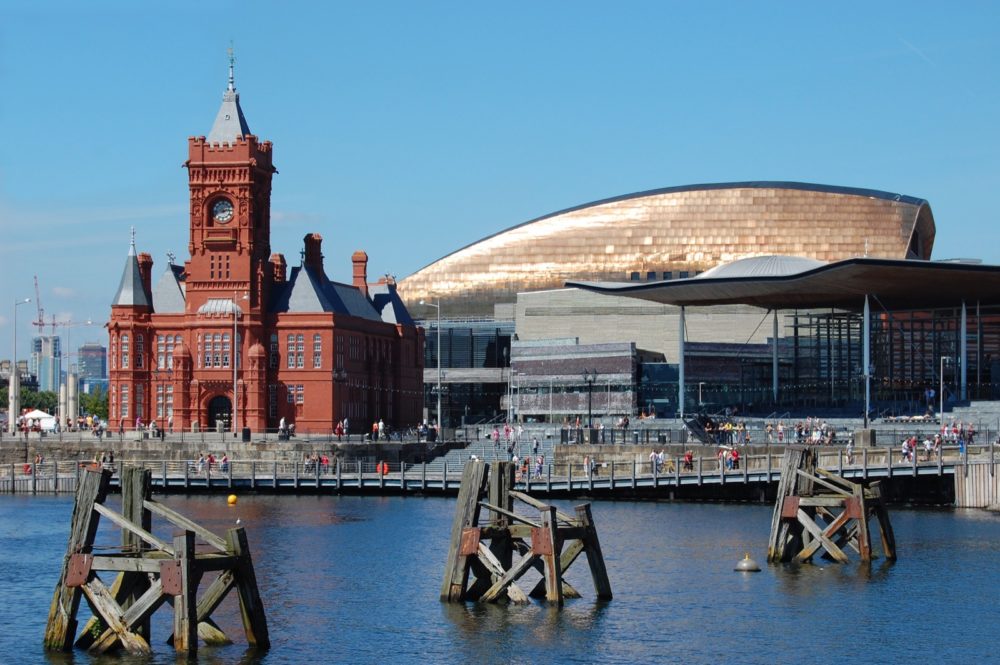New report predicts impact of future heatwaves in Welsh cities

A new study has predicted what it may feel like for people living in Cardiff, Newport and Wrexham during heatwaves in the future.
2022 was the UK’s warmest year on record. Extreme heat causes stress on our bodies and can result in heat stroke, exhaustion, and in the worst case death. The UK Health Security Agency estimated the extreme temperatures during that summer claimed almost 3000 additional lives in England and Wales.
According to the Met Office UKCP18 climate projections, these record breaking annual temperatures would be considered a ‘cool’ year by 2100. Which is why a group of experts from Wales and China teamed up to predict how these rising temperatures could affect people in three Welsh cities in the future.
Evidence
The peer-reviewed published paper by academics from Cardiff University, The University of Hong Kong, and Natural Resources Wales (NRW) provides new evidence on heat stress for local authorities to consider when trying to protect people’s health from severe heat.
Results suggest that peak heat stress on people is expected to increase by 4.5 degrees Celsius by 2080, especially for urban areas exposed to direct sunlight. And the percentage of daytime hours without heat stress are expected to reduce significantly, from 30-80% in 2020 to 10–70% by 2080.
The lowest values are paved areas with little shading from trees or surrounding buildings, and the highest values are areas with more shade, such as green spaces with trees or narrow alleys between tall buildings.
In Cardiff for example, the hottest areas that are exposed to heat stress for the majority of the daytime are the Hayes, Cardiff Train Station and Callaghan Square. And areas with more shade, such as Bute Park, are the coolest areas.
The study used innovative computer simulation to assess the extent of heat stress experienced by pedestrians by creating a ‘thermal digital twin’ of a 1 km by 1 km area in the urban centre of each city. The model was constructed using existing data of terrain, building shapes, surface thermal properties and tree canopy cover.
The paper concludes that mitigation measures are essential to reduce future heat stress in Welsh cities and towns. These include interventions such as increasing urban green spaces, ponds, lakes, trees and artificial shading.
Future extremes
Professor Phil Jones from Cardiff University’s Welsh School of Architecture said: “This project represents an important development in our understanding of outside comfort and well-being in our cities in the future, whilst also providing some insights into how we can mitigate against future extremes.
“This work with NRW enabled us to apply urban modelling tools being developed through our collaboration with Professor Jianxiang Huang at Hong Kong University.
“It demonstrates the importance of applying such tools and thinking into how we approach any planning interventions in our cities, and the importance of applying them today in order to have an impact on city environments of the future.”
Impacts
Peter Frost, Urban Green Infrastructure Advisor for Natural Resources Wales, said:“We are already experiencing the impacts of a changing climate globally and here in Wales with record breaking temperatures in recent years.
“The effects of future heatwaves will be extremely dangerous. Excessive heat also reduces comfort and disrupts outdoor activities which are associated with long-term health benefits, such as exercise, engagement and enjoyment of a place.
“We hope the results of this study prompts decisive action to plant more trees in urban areas to give our cities the shade they need to remain liveable during the heatwaves to come.
“Those same trees will also help our communities be resilient to climate change by absorbing carbon dioxide and reduce the impact of storms and flooding by slowing down the flow of rainwater.”
The model was used to predict hourly heat stress during the hottest day in the year of 1984 (past), 2020 (baseline), 2050, and 2080 using historical and predicted future weather data.
To estimate heat stress, the model analysed data on radiation, air temperature, wind speed, humidity, as well as the metabolic rate and clothing insulation of people in these urban areas. It also considered surface temperature of walls, ground, lawn, shrubs, water features and the shading effect of trees.
The paper, which is published in the journal Building and Environment, is free to read and download until 14 March.
Support our Nation today
For the price of a cup of coffee a month you can help us create an independent, not-for-profit, national news service for the people of Wales, by the people of Wales.








Someone tell the tree felling councilors that trees give shade…
How many of these council bods are tree felling investors ?
Maybe we should plant some trees on some of the 80% of the land on Wales that is agricultural?
How about in hedgerows rather than on food producing land?
Apart from the Church what a mess they have made there…
Hammer this into the heads of town and city planners/councils that trees provide shade…